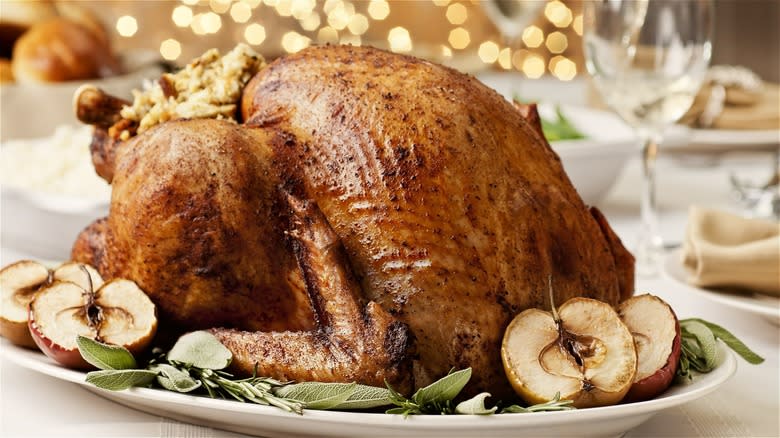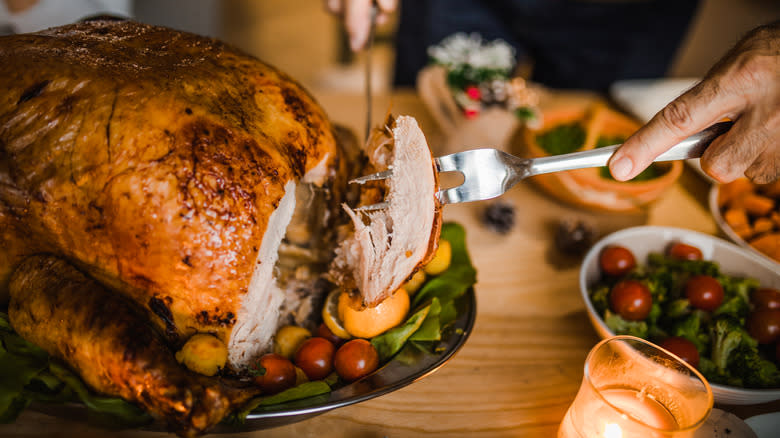High Altitude Affects How You Cook A Thanksgiving Turkey

When you're responsible for preparing Thanksgiving dinner with all the trimmings for your friends and family, it can be easy to make a few turkey-cooking mistakes, especially if you're on a time crunch. One common Thanksgiving mishap is an overcooked turkey, which can turn a tender, juicy bird into one that's disappointingly dry once you finally cut into it. For those who live at high altitudes, which most people in the mountainous, western U.S. do, the likelihood of overcooking your turkey increases as the atmospheric pressure drops.
Just as altitude affects baking, the same concept applies when you're roasting up that Thanksgiving turkey. The thinner the air gets, especially when you live higher than 2,500 feet, the more you'll have to adjust your cooking techniques to accommodate for the air's dryness. Moisture evaporates quickly where there's less oxygen in the air, so boiling begins much quicker at lower temperatures, and you'll need to tweak your cooking time accordingly. Increasing the temperature will only speed up the overcooking process, so you'll want to lower it and follow the trusty low-and-slow method. Sometimes, you might also need to consider implementing moisture-saving recipe hacks to up your chances of success as you increase your cooking times.
Read more: Cuts Of Steak, Ranked Worst To Best
At High Altitudes, Plan To Cook Your Turkey For 25% More Time

Roasting a Thanksgiving turkey the right way at high altitudes can be tricky, so if this is the case, you'll need to tack on at least 30 minutes of extra cooking time, depending on your turkey's size. For altitudes higher than 5,000 feet, it's recommended that you add five to 10 minutes of cooking per pound of turkey. If your bird is stuffed, be sure to include the stuffing's added weight in your calculations. Turkey-roasting pros always use a thermometer to make sure the internal temperature has reached at least 165° Fahrenheit at the thickest part of the turkey.
For those who want to be doubly sure their Thanksgiving turkey comes out perfectly moist, you can try filling a baking pan with water and placing it under your roast in the oven. Besides just adding steam to your cooking method, you can avoid dryness by basting your bird with stock every half hour and covering it with foil. Taking all the necessary precautions when cooking your turkey high above sea level will not only keep your guests happy and hungry for more — it will ensure you get to use leftover Thanksgiving turkey in the best ways.
Read the original article on Mashed.

